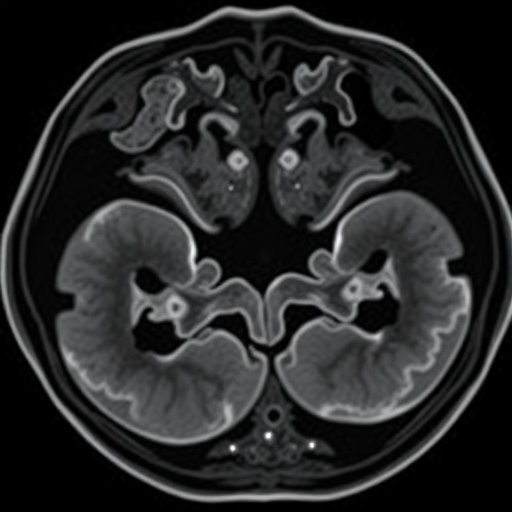In an unprecedented exploration of the complexities involved in conjoined twin pregnancies, researchers have recently delivered compelling insights from a study utilizing fetal magnetic resonance imaging (MRI). This innovative approach sheds light on the sometimes overwhelming challenges faced by medical professionals when diagnosing and managing conjoined twins, which remain one of the most intricate and rare anomalies in human development. The implications of this research could reshape prenatal care protocols and enhance our understanding of twinning in general.
Conjoined twins, or Siamese twins, occur due to an incomplete division of a single fertilized egg. This phenomenon leads to the development of twins who are physically connected at certain parts of their bodies. The varying degrees of connection can significantly complicate maternal and fetal health, requiring careful monitoring and intervention. The ability to visualize these complexities through advanced imaging techniques like MRI is revolutionary, allowing clinicians to gather critical information about shared organs, blood circulation, and overall fetal well-being.
Fetal MRI has emerged as a crucial tool in modern obstetrics, particularly for cases that present diagnostic challenges. As conjoined twins often exhibit unique anatomical configurations, traditional imaging methods like ultrasound may fall short of providing a comprehensive view. The high-resolution images produced by MRI allow for clear visualization of the complex relationships between shared organs and anatomical structures. Such clarity is pivotal when evaluating the functionality and health of each twin, informing decisions about potential surgical interventions even before birth.
The study in question illustrates a range of fetal MRI findings in conjoined twin pregnancies. Researchers documented cases involving different types of conjoined twins, showcasing the variety of presentations that occur in these pregnancies. Some conjoined twins may share organs such as the heart or liver, while others may have independent systems, albeit in close proximity. This variability demands a tailored approach to each case and reinforces the need for thorough imaging and analysis.
Additionally, one of the standout findings from the researchers is the evaluation of vascular connections between the twins. Understanding the shared blood supply can reveal critical information about the risks of complications during pregnancy and delivery. In certain situations, the presence of a shared circulatory system could endanger the life of one or both twins, necessitating a multidisciplinary approach that includes obstetricians, neonatologists, and surgeons.
The study also highlights the importance of prenatal planning. With the ability to visualize complex anatomical structures, clinicians can craft a detailed birth plan that maximizes the chances of survival and health for both twins. Proactive strategies may involve preparing for surgical interventions immediately after birth, especially in cases where life-threatening conditions are identified through fetal imaging.
Thus, fetal MRI not only assists in the understanding of physical characteristics but also plays a role in guiding ethical decisions that caregivers must make. When conjoined twins are diagnosed prenatally, parents are often faced with harrowing choices regarding intervention and delivery methods. Having access to detailed fetal imaging can empower them to make informed decisions alongside their healthcare providers. This collaborative approach enhances the overall quality of care provided to both mother and babies.
Moreover, the implications of this research extend beyond the immediate medical community. As the findings are disseminated, they can play a role in educating parents about the complexities of conjoined twinning. Awareness and knowledge can alleviate some of the anxiety experienced during such pregnancies, offering families support through challenging journeys.
With healthcare continually evolving through technological advancements, fetal MRI stands out as a particularly promising tool. This technology not only provides images but also interpretable data that can significantly reduce the uncertainties associated with conjoined twin pregnancies. As more studies emerge, the medical establishment will undoubtedly refine protocols and improve outcomes for these unique patients.
Another compelling aspect of this research is the scientific community’s growing interest in understanding twin pregnancies in general. This includes the genetics behind twinning, environmental influences during early gestation, and the health implications for twins as they develop into adulthood. Insights gained from fetal MRI studies contribute to a broader understanding of human development strategies and medical practices.
In conclusion, the use of fetal MRI in assessing conjoined twin pregnancies represents a vital frontier in maternal-fetal medicine. The detailed anatomical insights it provides are invaluable for both clinical practice and socio-emotional support for families. As we continue to refine our technologies and approaches, the ultimate goal remains clear: ensuring the best possible outcomes for these extraordinary cases of human development.
Subject of Research: Fetal MRI findings in conjoined twin pregnancies
Article Title: Fetal MRI findings in conjoined twin pregnancies
Article References:
Walcutt, J.E., Kline-Fath, B.M., Ayyala, R.S. et al. Fetal MRI findings in conjoined twin pregnancies. Pediatr Radiol (2025). https://doi.org/10.1007/s00247-025-06323-1
Image Credits: AI Generated
DOI: https://doi.org/10.1007/s00247-025-06323-1
Keywords: conjoined twins, fetal MRI, prenatal care, imaging techniques, maternal-fetal medicine




